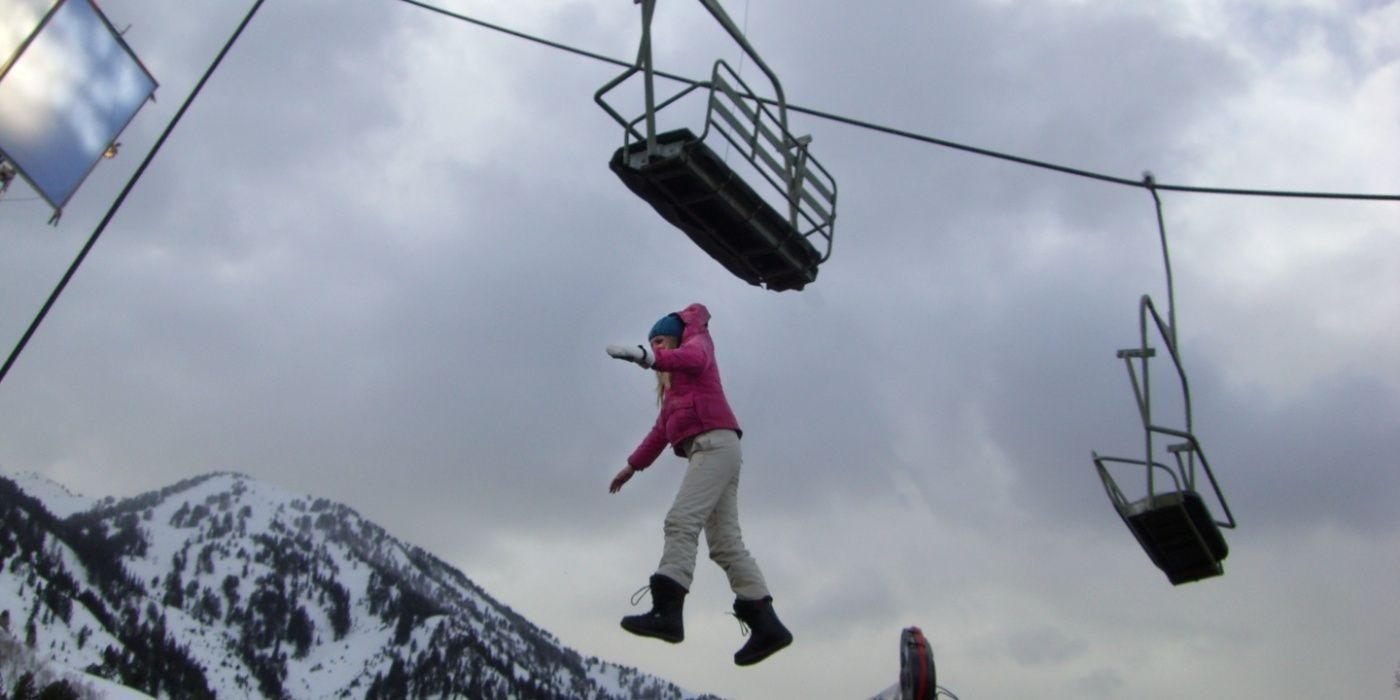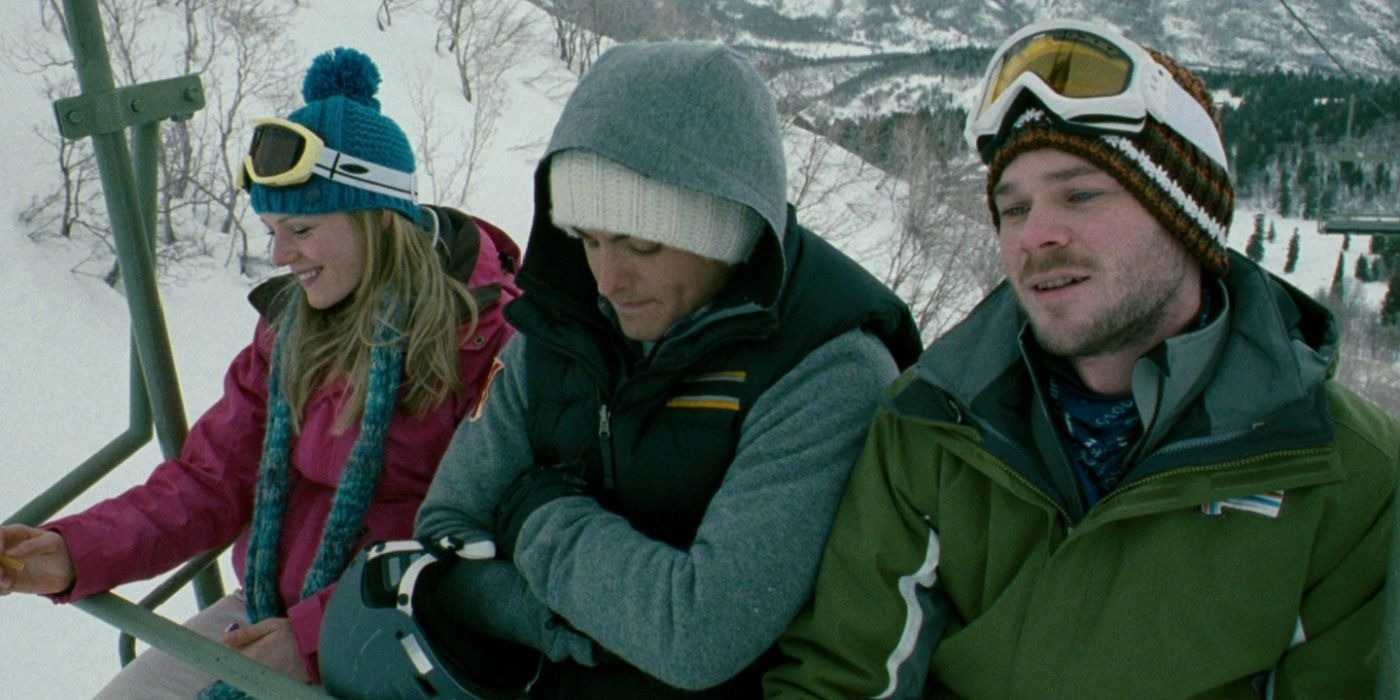Frozen (2010) tells a survival story far removed from Disney’s animated feature of the same name, and the ending is uncertain. Unlike the popular family animation, Adam Green’s Frozen presents a tense and unsettling tale of three friends trapped on a ski lift.
The story takes place in a realistic and chilling environment. Set at a ski resort, the plot follows Dan, Joe, and Parker as they are left stranded high above the ground after the lift halts operations for the week. With no help on the way, the trio must face extreme weather and isolation.

Adam Green’s direction in Frozen showcases a strong survival thriller, highlighting fear, perseverance, and the human instinct to stay alive, even when hope is fading.
The story builds from a simple situation into a deeply emotional fight for life, where the group must choose between freezing in place or risking an encounter with wolves. The chain of events that follow emphasizes how small decisions can turn deadly.
What keeps the film grounded is how real and possible the scenario feels, making the challenges of Dan, Joe, and Parker more relatable to viewers. The film asks hard questions about human behavior in hopeless situations and leaves a strong emotional effect.
What Happens To Joe & Dan In Frozen (2010)?
They Struggled But Could Not Beat Their Circumstances
Joe and Dan’s fate in Frozen reflects how hard they fought to survive, yet they still met heartbreaking ends. Their story begins as they, along with Parker, find themselves stuck mid-air on a ski lift, without anyone around to help. As hours drag on and their chances of being rescued grow slimmer, they feel forced to act.
Dan makes the first move by choosing to jump from the lift rather than wait to die slowly. Unfortunately, Dan’s landing is disastrous. Both of his legs break badly, leaving him helpless on the snowy ground.
As if the injury wasn’t enough, wolves soon appear and attack him, while Joe and Parker can do nothing but listen to his painful death. This event is not just physically brutal—it also breaks the spirit of those left behind.
After Dan dies, Joe realizes staying on the lift might lead to the same end, so he prepares a slower descent in hopes of avoiding Dan’s fate. Joe lowers himself carefully, trying to control his fall, but things still don’t go as planned. Once on the ground, he meets the same wolves, now drawn by blood and noise.
The situation turns violent, and Joe loses his life too. The events surrounding both Dan and Joe reinforce the film’s key ideas—desperation, survival, and nature’s harshness. Their deaths are a reminder of how fragile life is when caught in such unforgiving conditions.
Does Parker Survive In Frozen (2010)?
Her Ending Remains Open To Interpretation
Parker’s story stands out as both a display of strength and a mystery, leaving viewers to wonder about her true ending. After losing Dan and Joe, she forces herself to act, slowly climbing down the lift and attempting to find safety.
Her suffering is intense—severe frostbite, emotional trauma, and physical weakness—but her will keeps her going. The climax of her journey puts focus on the depth of human determination when all odds are against it.
Yet, what happens after she reaches the ground is unclear. Parker manages to climb down the mountain and reaches a road. She flags a car and gets taken away, which seems to suggest she made it. However, the final shot shows her closing her eyes, which brings uncertainty.
That quiet moment raises doubts: Is she simply resting, or is she about to die from her injuries? The extreme cold, fear, and exhaustion Parker experiences could also mean she might be imagining her rescue. The sight of the car might be a mental creation—her brain giving her peace before the end.
This uncertain conclusion makes the story more complex, pushing viewers to question what they believe they saw. Did she truly live, or was it her final moment of hope? That question adds weight to the ending.
Though actress Emma Bell reappears briefly as Parker in Hatchet II, giving a hint that she survives, the original film still leaves room for doubt.
The Wolves In Frozen (2010) Are Real
There Was No Use of CGI for These Animals
Director Adam Green made a creative choice that increased the realism of Frozen—the wolves were actual animals, not computer-generated images. Responding to assumptions from some viewers, Green explained that the wolves used in the film were trained by a specialist known for work on other major productions.
According to Green, these wolves were trained over six weeks, and their unpredictable nature made filming even more intense. The decision to use real wolves added a layer of raw danger to the movie. Knowing the animals were not artificial makes every scene involving them more unsettling.
These creatures behave like real predators, not just horror movie effects, making the fear they inspire feel justified. Their presence helped the film maintain its serious tone and added to the anxiety surrounding the trio’s situation.
Is Frozen (2010) Based On A True Story?

Though Fictional, It Draws From Real-Life Fears
While the plot of Frozen did not come from an actual event, its ideas were inspired by believable situations, especially ones that director Adam Green was personally familiar with. He has spoken about his childhood skiing trips and how the fear of getting stuck on a lift always haunted him.
That real anxiety gave birth to the story told in the film. The ski setting and the sense of isolation feel accurate to those who’ve visited similar resorts. Green’s background helped him design a scenario that could happen, even if it never did.
He remembered the fear of being on the last ride down the mountain, hearing the lift stop, and wondering if rescue would come. That worry forms the heart of the story’s tension.
How Realistic Is Frozen (2010)?
Its Portrayal of Survival Is Grounded and Believable
The level of realism shown in Frozen makes it different from other films in the same genre. How the characters react mentally and physically to being stuck is portrayed believably. The emotional breakdowns, slow decision-making, and sheer panic they experience could easily happen in real life.
Shooting in a real ski resort and including actual wolves adds even more weight to the film’s tone. The freezing conditions, the height of the lift, and the long hours they endure feel like something that could happen. The film’s simplicity is what makes it frightening.
The more realistic the situation appears, the easier it is for the audience to place themselves in the same shoes, sharing in the characters’ fear.
The Real Meaning Of Frozen (2010)’s Ending
It Offers More Than Just a Story of Survival
There is a deeper message behind how Frozen ends, one that focuses on strength, endurance, and respect for the environment. Parker’s journey becomes a powerful image of what humans can go through and still push forward. Her survival stands as a strong picture of holding on, even when everything seems lost.
At the same time, the film reminds viewers that nature doesn’t always care about human plans. What happened on that lift wasn’t caused by a villain—it was caused by being forgotten in a remote place.
The lasting emotional impact on Parker, if she did survive, shows how trauma stays with a person long after the physical danger has passed. Frozen goes beyond just telling a scary story—it reflects how people deal with fear, loss, and survival in the face of deadly challenges.



